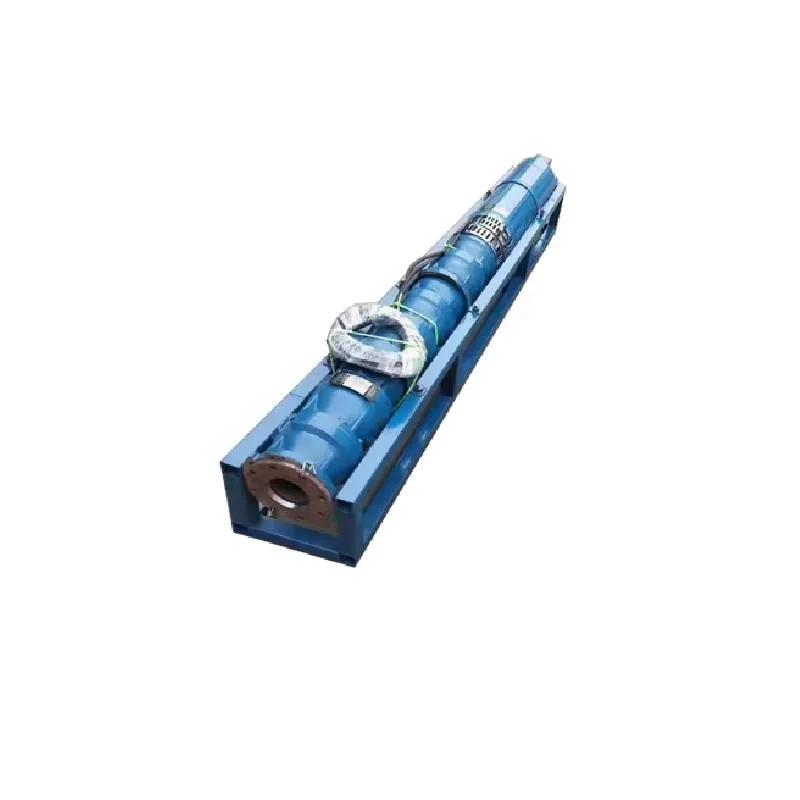feb. . 06, 2025 05:05 Back to list
Water Filled Submersible Pump
Choosing between an oil-filled and a water-filled submersible pump can significantly impact the efficiency and longevity of various pumping applications. While both types serve the core purpose of facilitating fluid movement, their distinct features make them suitable for different needs. This comprehensive exploration, grounded in professional and authoritative insights, examines the comparative advantages of oil-filled versus water-filled submersible pumps to help you make an informed decision.
Water-filled submersible pumps tend to have simpler maintenance requirements, primarily because there's no need for oil management. This simplicity translates into lower operational costs and reduced maintenance interventions. Furthermore, their design inherently supports the safe operation in contexts where oil contamination could pose operational or environmental risks. For residential and agricultural purposes, where ease of maintenance is a priority, these pumps prove to be cost-effective and efficient. In terms of energy efficiency, the debate remains contextual. Oil-filled pumps, with their superior thermal regulation, often exhibit enhanced energy efficiency in high-stress environments. On the contrary, water-filled pumps offer energy efficiency in low-demand applications by utilizing the working fluid as a cooling agent, which inherently reduces the energy requirements for separate cooling systems. Professionals in the field highlight that the ideal choice between oil-filled and water-filled submersible pumps is ultimately dictated by the specific requirements of the application at hand. For heavy-duty, industrial applications demanding rigorous, continuous use, oil-filled pumps provide a durable and reliable solution. In contrast, water-filled pumps represent an ideal solution for applications demanding minimal environmental impact and reduced maintenance. Trustworthy results in pump performance and longevity are achieved when selecting a pump aligned with its intended use. Consulting with pump specialists can provide further clarity tailored to unique operational requirements, ensuring that the selected pump not only meets performance expectations but does so sustainably and efficiently. Both oil and water-filled pumps have distinct merits, and understanding these advantages in the context of specific applications is critical for optimal selection and utilization.


Water-filled submersible pumps tend to have simpler maintenance requirements, primarily because there's no need for oil management. This simplicity translates into lower operational costs and reduced maintenance interventions. Furthermore, their design inherently supports the safe operation in contexts where oil contamination could pose operational or environmental risks. For residential and agricultural purposes, where ease of maintenance is a priority, these pumps prove to be cost-effective and efficient. In terms of energy efficiency, the debate remains contextual. Oil-filled pumps, with their superior thermal regulation, often exhibit enhanced energy efficiency in high-stress environments. On the contrary, water-filled pumps offer energy efficiency in low-demand applications by utilizing the working fluid as a cooling agent, which inherently reduces the energy requirements for separate cooling systems. Professionals in the field highlight that the ideal choice between oil-filled and water-filled submersible pumps is ultimately dictated by the specific requirements of the application at hand. For heavy-duty, industrial applications demanding rigorous, continuous use, oil-filled pumps provide a durable and reliable solution. In contrast, water-filled pumps represent an ideal solution for applications demanding minimal environmental impact and reduced maintenance. Trustworthy results in pump performance and longevity are achieved when selecting a pump aligned with its intended use. Consulting with pump specialists can provide further clarity tailored to unique operational requirements, ensuring that the selected pump not only meets performance expectations but does so sustainably and efficiently. Both oil and water-filled pumps have distinct merits, and understanding these advantages in the context of specific applications is critical for optimal selection and utilization.
Latest news
-
Water Pumps: Solutions for Every Need
NewsJul.30,2025
-
Submersible Well Pumps: Reliable Water Solutions
NewsJul.30,2025
-
Stainless Steel Water Pumps: Quality and Durability
NewsJul.30,2025
-
Powerful Water Pumps: Your Solution for Efficient Water Management
NewsJul.30,2025
-
Oil vs Water Filled Submersible Pumps: Which is Better?
NewsJul.30,2025
-
Deep Well Pumps: Power and Reliability
NewsJul.30,2025
-
 Water Pumps: Solutions for Every NeedWhen it comes to handling dirty water, the dirty water pump is a must-have.Detail
Water Pumps: Solutions for Every NeedWhen it comes to handling dirty water, the dirty water pump is a must-have.Detail -
 Submersible Well Pumps: Reliable Water SolutionsWhen it comes to ensuring a reliable water supply, submersible well pumps are a top choice.Detail
Submersible Well Pumps: Reliable Water SolutionsWhen it comes to ensuring a reliable water supply, submersible well pumps are a top choice.Detail -
 Stainless Steel Water Pumps: Quality and DurabilityWhen it comes to choosing a water pump, the stainless steel water pump price is a crucial factor.Detail
Stainless Steel Water Pumps: Quality and DurabilityWhen it comes to choosing a water pump, the stainless steel water pump price is a crucial factor.Detail
